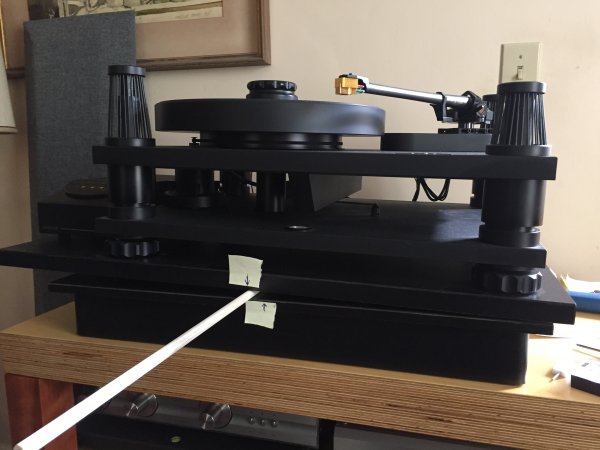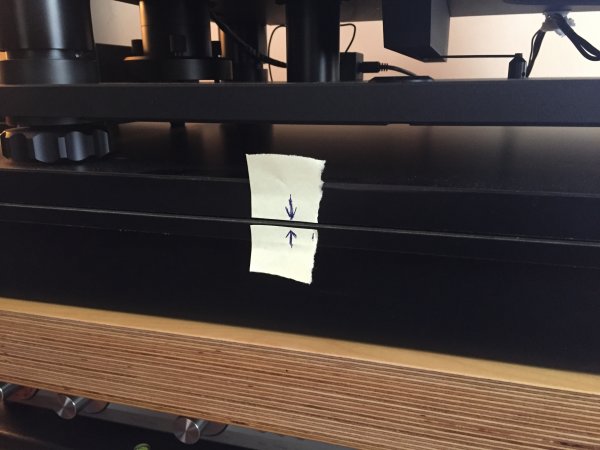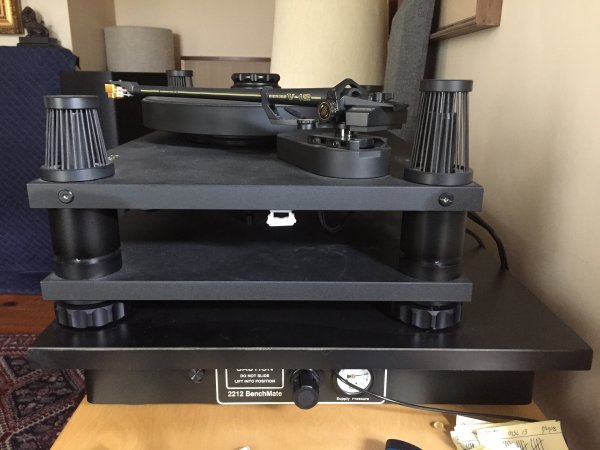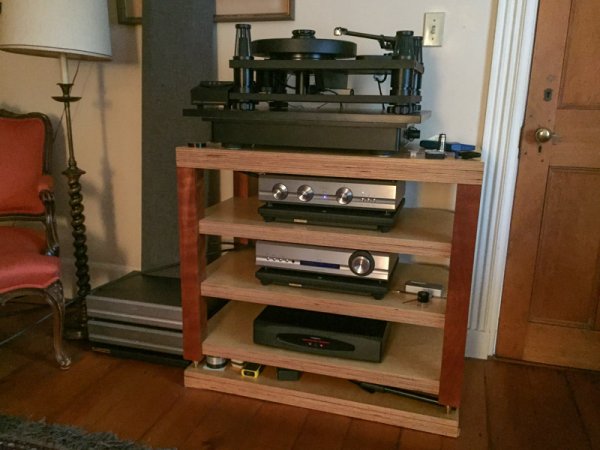For some time I have been meaning to confirm that my turntable, motor controller and the steel ballast plate on which they are placed, are centered on my Vibraplane. The intent was to equally distribute the weight/mass over each of the three air bladders to potentially increase the longevity of each, and also to perhaps improve the effectiveness of this isolation approach and ideally improve sonics.
I figured out a simple way to do this without scales and measurements, and calculations. I went to the hardware store and for $2 bought a 36" X 1/4" round dowel. I deflated the Vibraplane and marked the center of the top plate. I then placed the dowel on the top plate and located the center of gravity by sliding it around until it was balanced. This was no so easy as the turntable, controller, and ballast plate together weight about 250 lbs.
With some effort, I was able to locate the center, in one axis, and I moved the mass over the center of the Vibraplane. The other axis is more difficult. I can find the center of mass of the table and plate, but the center of the Vibraplane is no so clear because it is square, but the three air bladders are unequally distributed, with two in the front and one in the rear.
So, for this axis, I simply moved the turntable and controller toward the front, so they are more directly over the two bladders in front. When I went to re-inflate the three bladders, the table rose more evenly than before, so it is an improvement.
I will have to wait to assess any sound quality change until after I get one of my Transparent Audio cables back. It is at the factory being recalibrated for the new output impedance of my new phono stage.
Finding the center of mass of the turntable/controller/ballast plate:

Aligning the center of mass of what is above to the center of mass of the three Vibraplane air bladders:

Shifting the turntable forward to be more over the two air bladders in the front of the Vibraplane.






